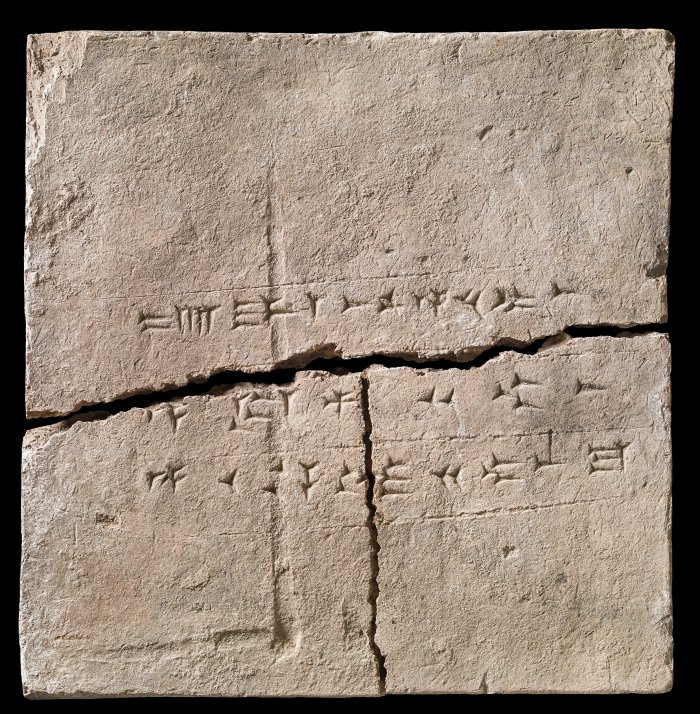Jan Bartek – AncientPages.com – For the first time, a group of researchers have successfully extracted ancient DNA from a 2,900-year-old clay brick. Currently housed at the National Museum of Denmark, the clay brick originates from the palace of Neo-ᴀssyrian king Ashurnasirpal II in the ancient city of Kalhu. Known today as the North-West Palace in Nimrud (modern-day northern Iraq), its construction began around 879 BCE.

The clay brick from the National Museum of Denmark from which the samples were derived. Credit: Arnold Mikkelsen og Jens Lauridsen. Credit: Arnold Mikkelsen og Jens Lauridsen.
The brick has a cuneiform inscription (written in the now extinct Semitic language Akkadian) stating that it is “The property of the palace of Ashurnasirpal, king of ᴀssyria.” This makes it possible to date the brick precisely to within a decade (879 BCE to 869 BCE).
During a digitalization project at the Museum in 2020, the group of researchers were able to obtain samples from the inner core of the brick—meaning that there was a low risk of DNA contamination since the brick was created. The team extracted DNA from the samples by adapting a protocol previously used for other porous materials, such as bone.
After the extracted DNA had been sequenced, the researchers identified 34 distinct taxonomic groups of plants. The plant families with the most abundant sequences were Brᴀssicaceae (cabbage) and Ericaceae (heather). Other represented families were Betulaceae (birch), Lauraceae (laurels), Selineae (umbellifiers) and Triticeae (cultivated grᴀsses).
With the interdisciplinary team comprising ᴀssyriologists, archaeologists, biologists, and geneticists, they were able to compare their findings with modern-day botanical records from Iraq as well as ancient ᴀssyrian plant descriptions.
The brick would have been made primarily of mud collected near the local Tigris river, mixed with material such as chaff or straw, or animal dung. It would have been shaped in a mold before being inscribed with cuneiform script, then left in the sun to dry. The fact that the brick was never burned, but left to dry naturally, would have helped to preserve the genetic material trapped within the clay.
Dr. Sophie Lund Rasmussen (Wildlife Conservation Research Unit, Department of Biology, University of Oxford), joint first author of the paper, said, “We were absolutely thrilled to discover that ancient DNA, effectively protected from contamination inside a mᴀss of clay, can successfully be extracted from a 2,900-year-old clay brick.
This research project is a perfect example of the importance of interdisciplinary collaboration in science, as the diverse expertise included in this study provided a holistic approach to the investigation of this material and the results it yielded.”
In addition to the fascinating insight this individual brick revealed, the research serves as a proof of concept and method which could be applied to many other archaeological sources of clay from different places and time periods around the world, to identify past flora and fauna. Clay materials are nearly always present in any archaeological site around the world, and their context means they can often be dated with high precision.
“Because of the inscription on the brick, we can allocate the clay to a relatively specific period of time in a particular region, which means the brick serves as a biodiversity time-capsule of information regarding a single site and its surroundings.
In this case, it provides researchers with a unique access to the ancient ᴀssyrians,” said Dr. Troels Arbøll, joint first author of the paper and junior research fellow at Faculty of Asian and Middle Eastern Studies, University of Oxford, when the study was conducted.
The study was published in the journal Scientific Reports
Written by Jan Bartek – AncientPages.com Staff Writer





